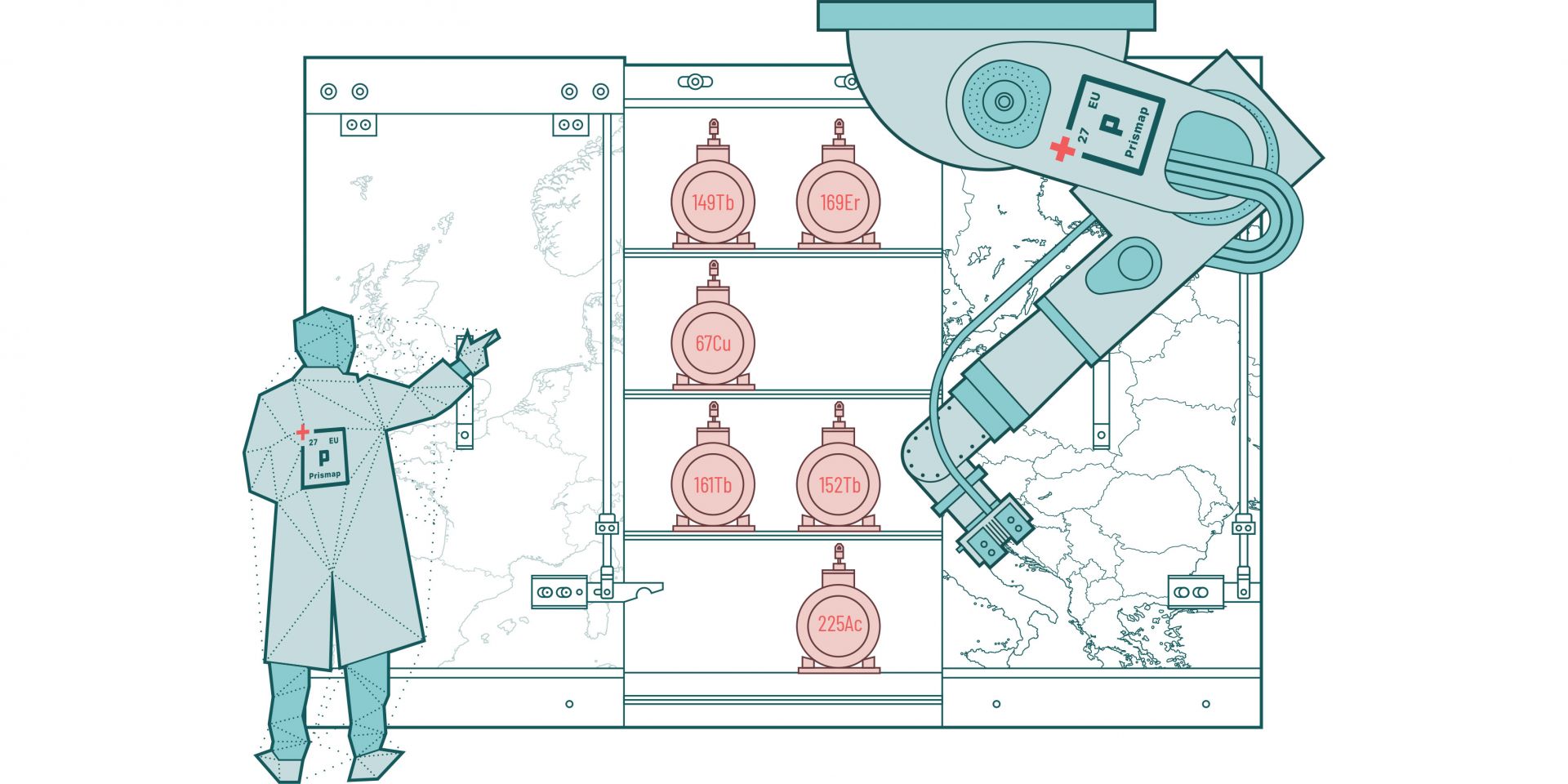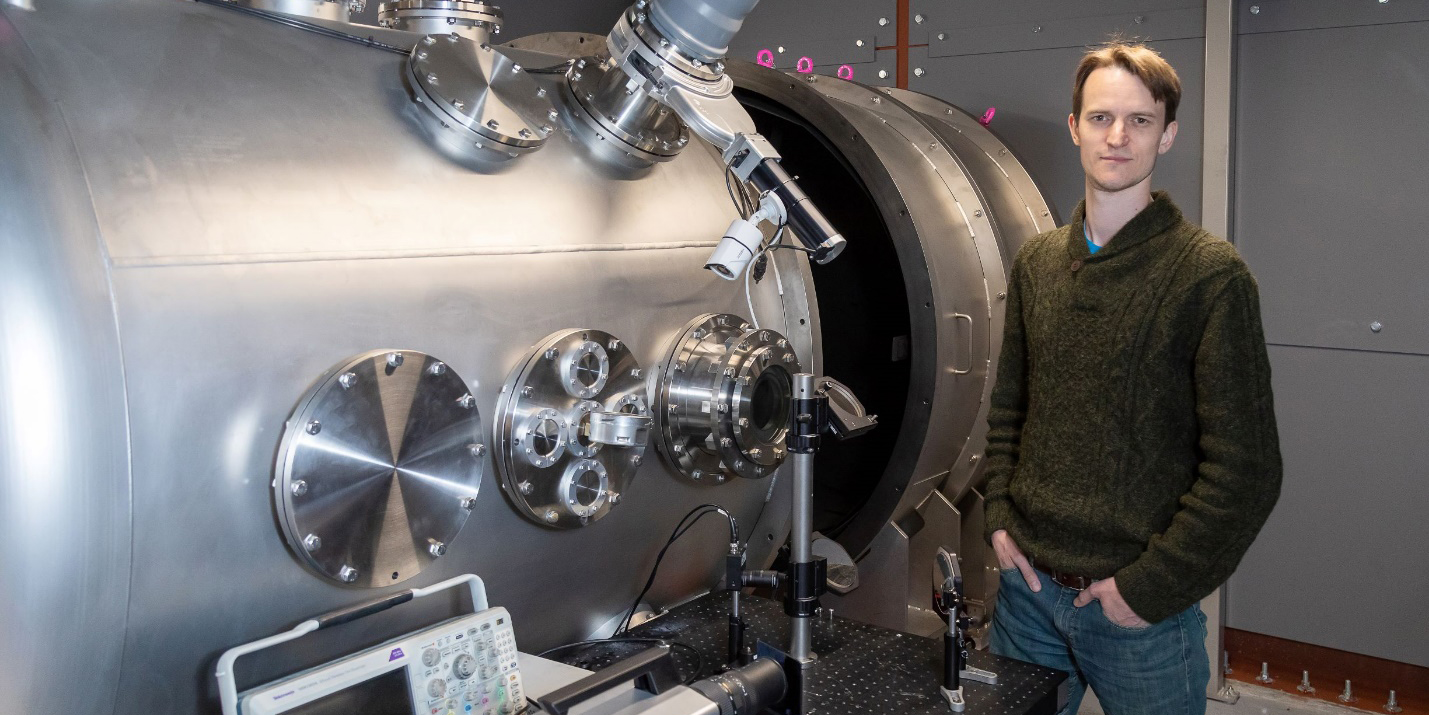In a global market with different national regulations, on-site testing of power plant components can be complex. Thanks to smart glasses, remote testing should become easier.
March 29, 2023, 9:30AMNuclear NewsChristoph Gatzen and Simon Lemin VR glasses from manufacturer RealWear.
The challenges of climate change are bringing nuclear energy back into focus. Even in Germany, which decided on a general nuclear phaseout in 2011 as a response to the Fukushima disaster that year, nuclear energy is again being discussed as a bridging technology. Compared with fossil fuels, nuclear saves considerable greenhouse gases. However, for a holistic view of CO2 emissions from power plants, the procurement, maintenance, and repair of plant components must also be considered. At the very least, the CO2 emissions caused by the high costs of testing and maintaining a nuclear power plant can be reduced.
A rendering of Last Energy's nuclear power plant. (Image: Last Energy)
Startup company Last Energy has announced power purchase agreements for 34 units of its 20-MWe nuclear power plants with four industrial partners in Poland and the United Kingdom. In total, according to the company, the deals represent more than $18.9 billion in electricity sales.
Two British Class 88 locomotives transport a nuclear waste flask wagon across Great Britain. (Photos: NTS)
Since its formation in 2005, the United Kingdom’s Nuclear Decommissioning Authority (NDA) has been tasked with ensuring that the U.K.’s nuclear legacy sites are decommissioned and cleaned up safely, securely, cost-effectively, and in ways that protect the people and the environment.
The first silo emptying machine installed in the Magnox Swarf Storage Silo at the U.K. Sellafield site. (Photo: Gov.UK)
The second of three machines that will be used to safely remove waste from the Magnox Swarf Storage Silo at the Sellafield nuclear site in the United Kingdom has successfully been assembled, it was announced by Sellafield Ltd., a subsidiary of the U.K. government’s Nuclear Decommissioning Authority.
A video showing how waste is removed and the Magnox Swarf Storage Silo prepared for decommissioning has been posted to YouTube and can be found here.
The Spherical Tokamak for Energy Production, shown here in an artist's rendition, is a government-backed prototype fusion energy plant planned for operation in the U.K. in the early 2040s. (Image: UKAEA)
The U.K. Atomic Energy Authority (UKAEA) and Tokamak Energy announced on October 10 that they signed a framework agreement to collaborate on developing spherical tokamaks for power production. This news is a complement to last week’s announcement from the U.K. government that the West Burton A coal-fired power plant site in Nottinghamshire has been selected as the future home of STEP (Spherical Tokamak for Energy Production), the U.K.’s planned prototype fusion energy plant. The government is providing £220 million (about $250 million) of funding for the first phase of STEP, which will see the UKAEA produce a concept design by 2024.
The Spherical Tokamak for Energy Production (STEP), shown here, is a government-backed prototype fusion energy plant planned for operation in the U.K. in the early 2040s. (Image: UKAEA)
Future fusion energy facilities will continue to be regulated by the Environment Agency (EA) and Health & Safety Executive (HSE), the U.K. government announced June 20, and existing law on nuclear regulations will be amended to exclude fusion energy facilities from nuclear fission regulatory and licensing requirements. The move was announced by the United Kingdom Atomic Energy Authority (UKAEA) with the expectation it would provide “clarity to developers of prototype/demonstration fusion facilities currently being planned to support rapid commercialization.”
Europeans are taking resolute steps to reduce their output of climate-changing gases, but some countries are moving in the wrong direction.
Europeans are taking resolute steps to reduce their output of climate-changing gases, but some countries are moving in the wrong direction.
Many countries are adding solar and wind, which are low-carbon energy sources. Some have moved to biomass, the value of which as a climate cure is not clear. A few are adding reactors, while others are defining nuclear as dirty energy and natural gas as “clean” and are changing their generation mix accordingly.
Bulk Processing Unit at the Perma-Fix Northwest waste treatment facility. (Photo: Perma-Fix)
Westinghouse Electric Company and nuclear waste management company Perma-Fix Environmental Services plan to jointly develop a state-of-the-art advanced materials treatment facility in the United Kingdom. During the 2022 Waste Management Symposia, held last week in Phoenix, Ariz., the two companies signed a nonbinding agreement to cooperate on a facility that will provide low-level radioactive waste treatment services to the European market.
Five sites have been shortlisted for the U.K.’s STEP fusion facility. (Image: UKAEA)
The United Kingdom has announced a shortlist of five sites as the potential future home of the U.K. Atomic Energy Authority’s (UKAEA) prototype fusion energy plant, the Spherical Tokamak for Energy Production (STEP). A final decision on the plant’s location is to be made by the U.K.’s secretary of state for business, energy and industrial strategy around the end of 2022.
A conceptual image of collaboration across Europe. (Image: PRISMAP/SCIPROM)
Only a few of the more than 3,000 radioisotopes that scientists have synthesized in the laboratory are regularly used in diagnostic or therapeutic medicine. One significant barrier to the development of new medical radioisotopes is the difficulty of gaining access to radionuclides during the early stages of development and research. PRISMAP is a new medical radionuclide program designed to streamline that access for medical research in the European Union and the United Kingdom.
First Light Fusion CEO Nick Hawker stands near the target end of the 22-meter-long gas gun. (Photo: First Light)
Inside a new steel-clad facility nicknamed “The Citadel,” First Light Fusion has installed a 22-meter two-stage gas gun—the third-largest such component in Europe.

















